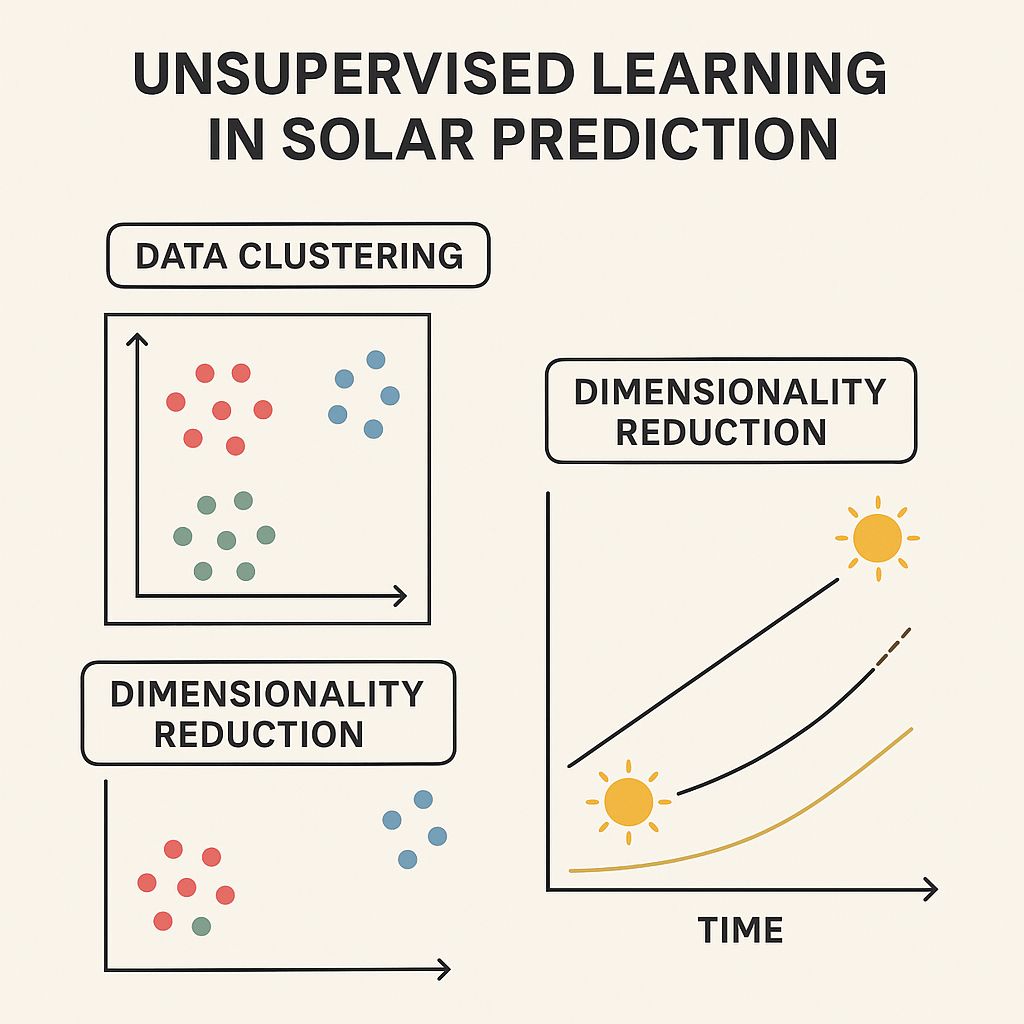As the demand for renewable energy sources increases, so does the need for advanced predictive technologies. Solar energy, characterized by its variability due to environmental factors, presents unique challenges for prediction models. Unsupervised learning, a type of machine learning that does not require labeled data, is becoming a critical tool in predicting solar energy output. This article explores how unsupervised learning algorithms are used for solar prediction, addressing the challenges and outlining the methodologies and benefits of these approaches.
Challenges of Unsupervised Learning in Solar Prediction
Unsupervised learning algorithms face several challenges when applied to solar energy forecasting:
- Lack of Labeled Data: Solar prediction typically lacks direct outcome labels, making it difficult to train models that can accurately predict future solar output based on past data.
- High Dimensionality: Solar data includes various factors like weather conditions, time of day, and geographical information, which contribute to the complexity of the data set.
- Noise and Outliers: The inherent noise and outliers in environmental data can lead to inaccuracies in pattern recognition and prediction outcomes.
- Dynamic Nature: The continuously changing environmental conditions affect solar energy generation, requiring adaptive models that can respond to these changes effectively.
Methodologies in Unsupervised Learning for Solar Prediction
To overcome these challenges, several unsupervised learning techniques have been developed:
- Clustering: Techniques like k-means and fuzzy C-means clustering are used to group similar data points together. This helps in identifying patterns and behaviors in solar energy data that are not immediately obvious. By segmenting the data into clusters, models can more accurately predict solar output for each group based on its unique characteristics.
- Dimensionality Reduction: Methods such as Principal Component Analysis (PCA) are applied to reduce the complexity of the data while retaining the most significant features. This simplification is crucial for enhancing the performance of prediction models by focusing on the most impactful variables.
- Hybrid Models: Integrating unsupervised learning with supervised approaches like Deep Neural Networks (DNNs) and Long Short-Term Memory networks (LSTMs) has proven effective. This combination utilizes the strengths of both learning types to improve accuracy and adaptability of the predictive models across various forecasting intervals.
Real-World Applications and Benefits
The application of unsupervised learning algorithms in solar prediction offers several benefits:
- Enhanced Prediction Accuracy: By effectively handling the variability and complexities of solar data, these algorithms improve the accuracy of solar energy forecasts.
- Operational Efficiency: Accurate predictions enable better management of solar energy systems, optimizing energy production and reducing waste.
- Grid Stability: Reliable solar output predictions contribute to grid stability, especially in systems with high shares of renewable energy sources.
Future Directions
Future research in unsupervised learning for solar prediction is likely to focus on improving the robustness and scalability of the algorithms to handle larger and more complex datasets. Advances in computational power and data processing technologies will also enable more sophisticated models that can provide even more accurate and timely predictions.
Conclusion
Unsupervised learning algorithms play a crucial role in advancing solar energy prediction, helping to manage the variability and unpredictability of solar output. As these technologies continue to evolve, they will provide vital support in the integration of solar energy into the global energy mix, promoting the use of sustainable and renewable energy sources.
What is unsupervised learning in solar prediction?
Unsupervised learning in solar prediction refers to the use of machine learning algorithms that analyze and interpret solar energy data without requiring labeled outcomes. These algorithms identify patterns and trends in the data to forecast solar energy output effectively.
Why are unsupervised learning algorithms used for solar prediction?
Unsupervised learning algorithms are used because they can handle the vast and complex datasets typical in solar energy forecasting, which often lack specific outcome labels. These algorithms help in discovering intrinsic structures within the data, facilitating better prediction models.
What are the main challenges of using unsupervised learning for solar prediction?
The main challenges include dealing with the high dimensionality of solar data, the absence of labeled data, the presence of noise and outliers in the data, and the dynamic nature of solar energy generation which affects prediction accuracy.
How do unsupervised learning techniques improve solar prediction?
Techniques like clustering and dimensionality reduction help simplify the data and reveal important patterns. Hybrid models that combine unsupervised and supervised learning methods also enhance prediction accuracy and adaptability.
What are the benefits of using unsupervised learning in solar energy forecasting?
Benefits include improved accuracy of solar energy forecasts, enhanced operational efficiency of solar power systems, and better grid stability in energy systems with high shares of renewable energy sources.


